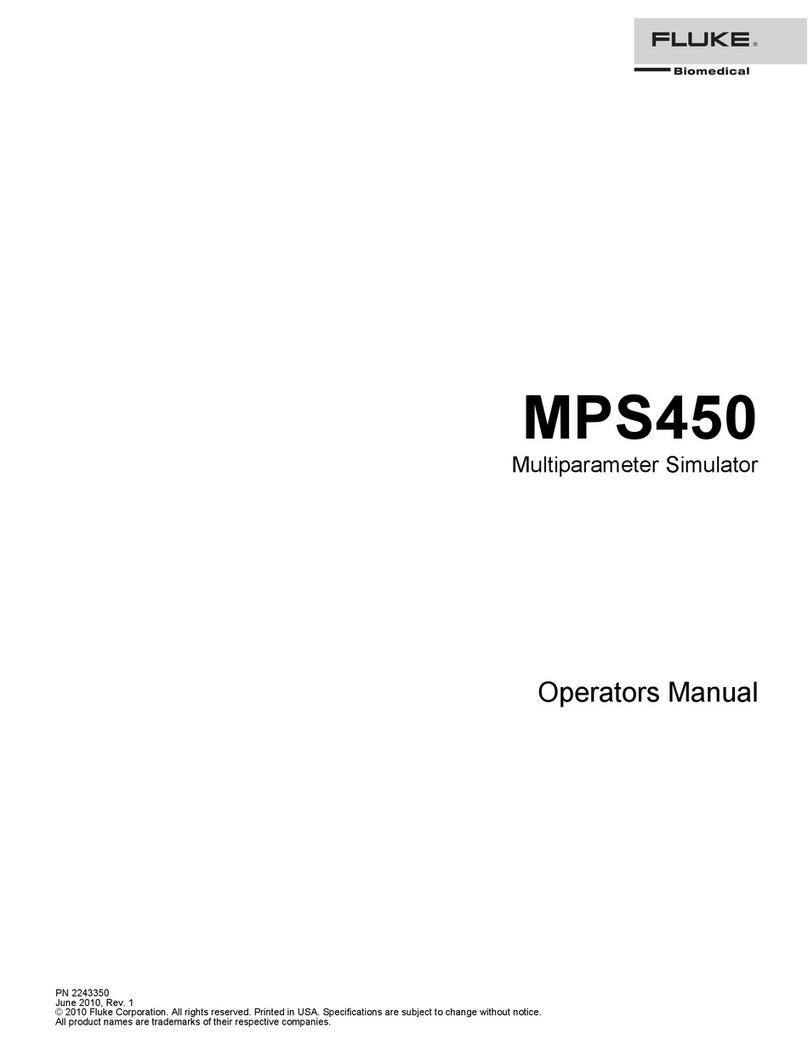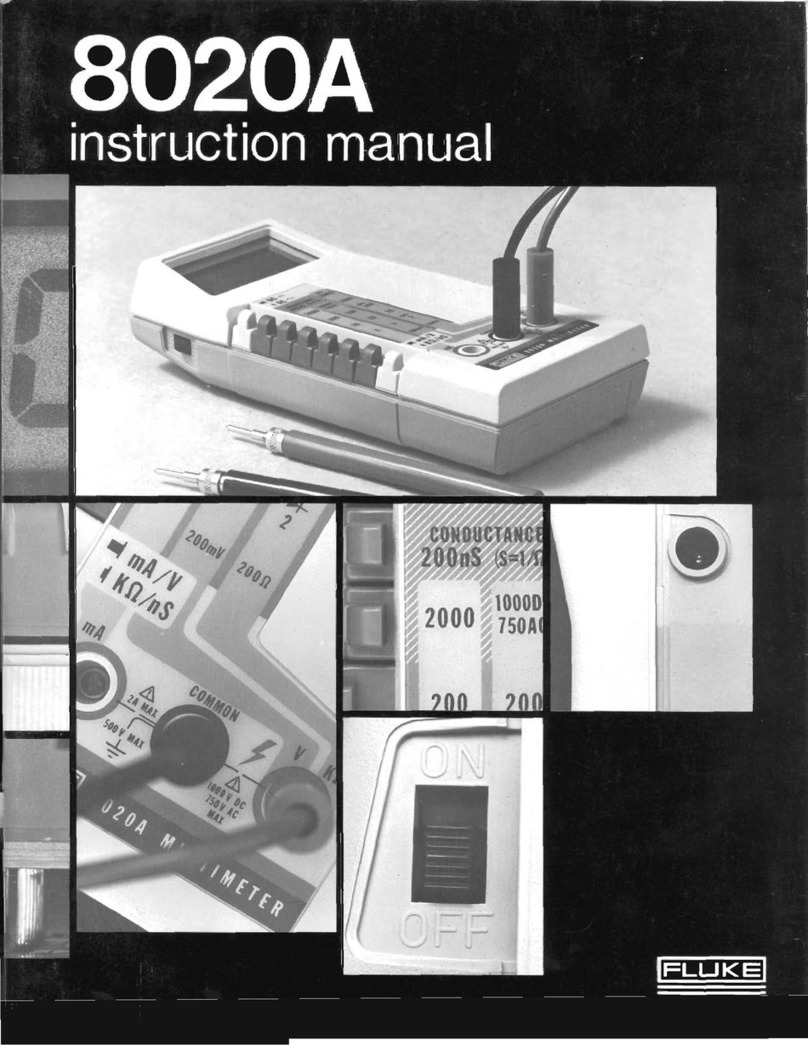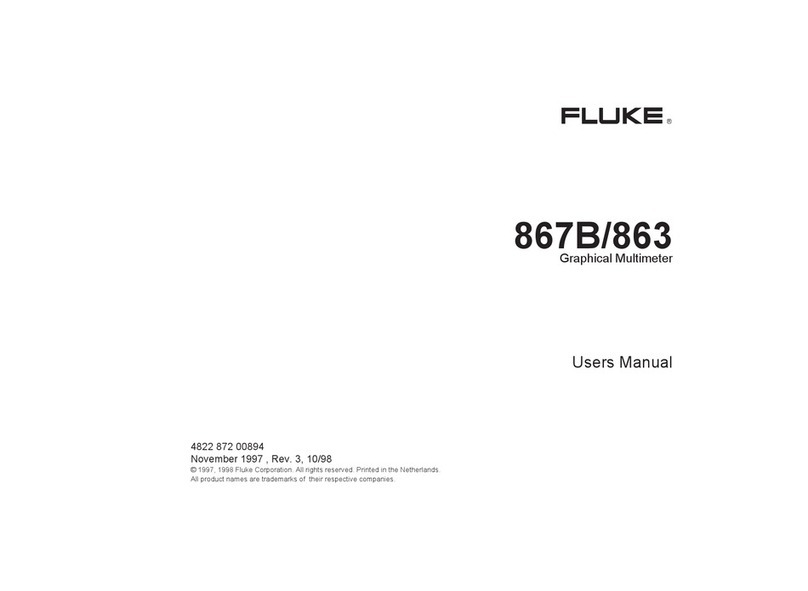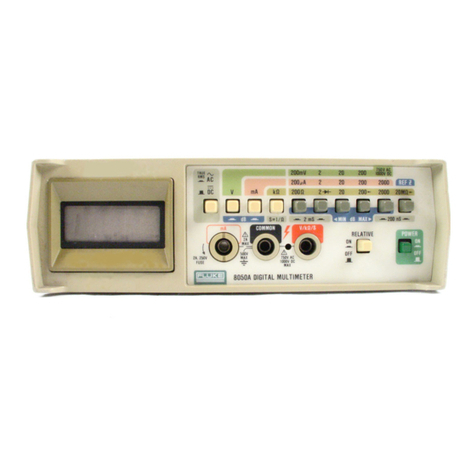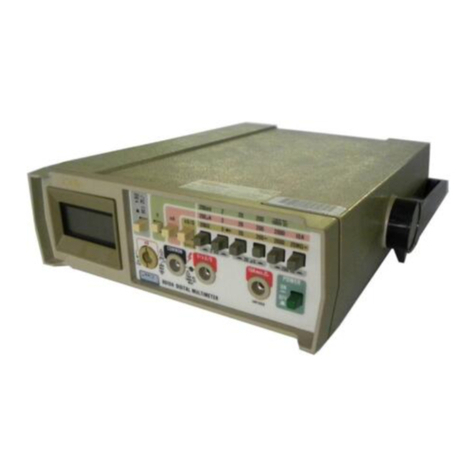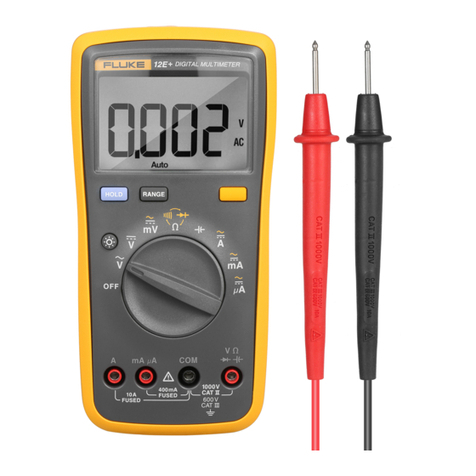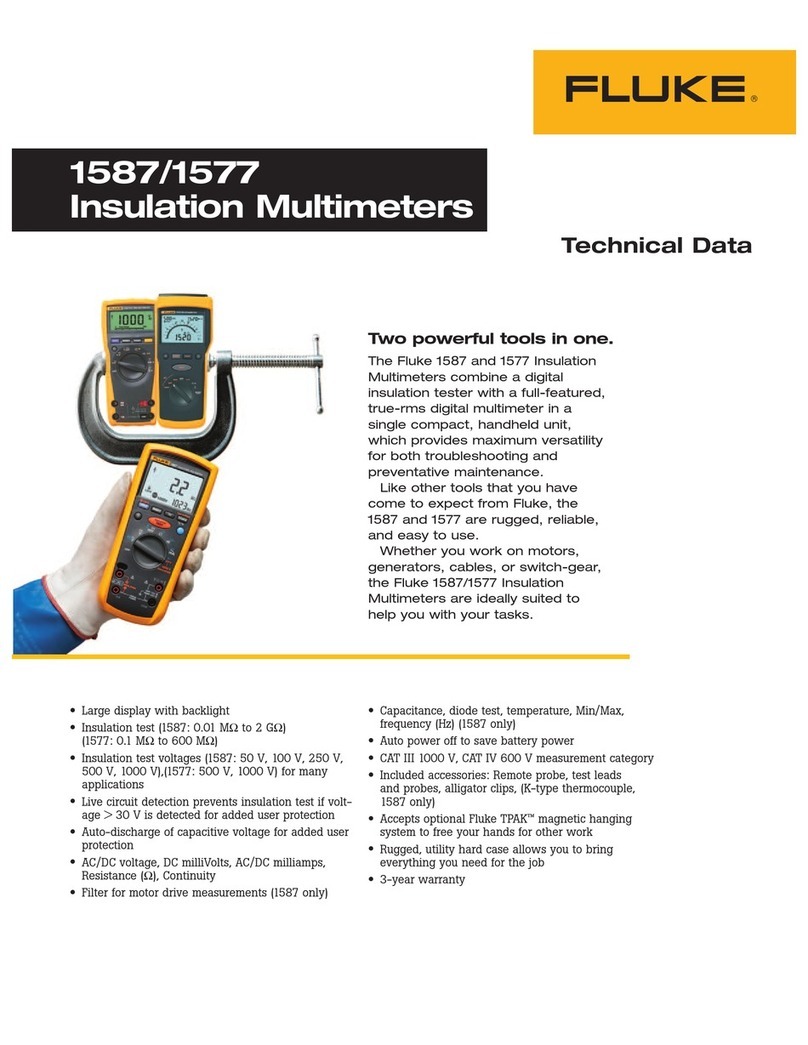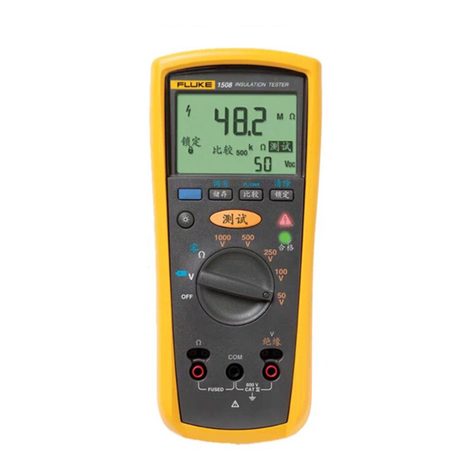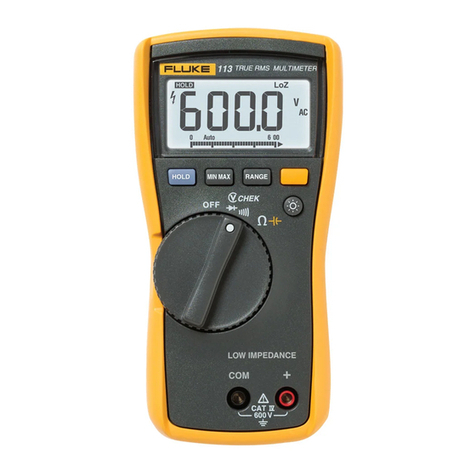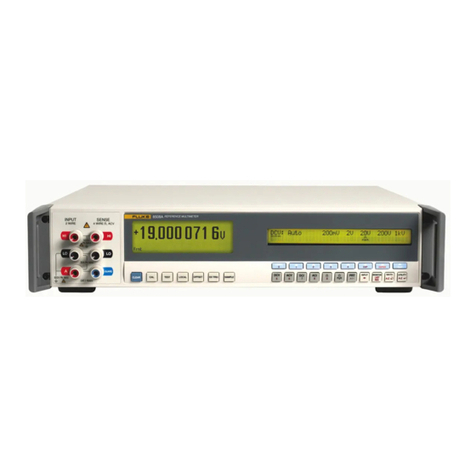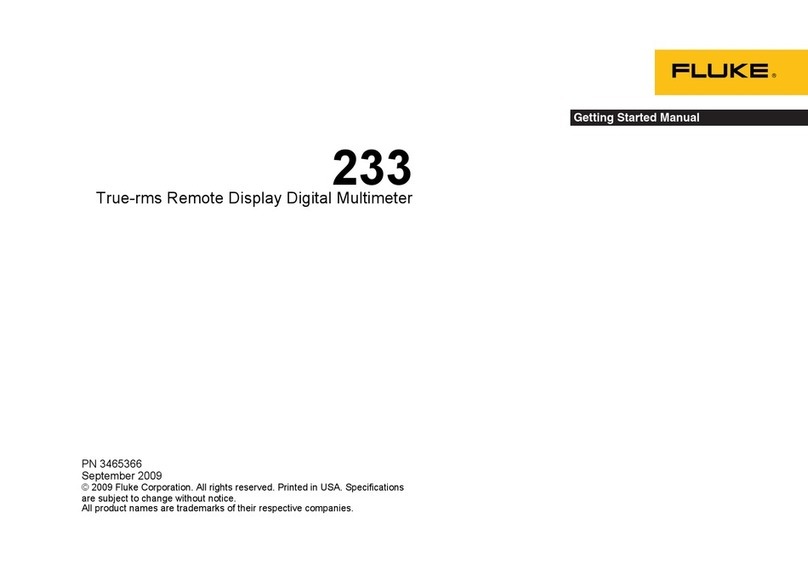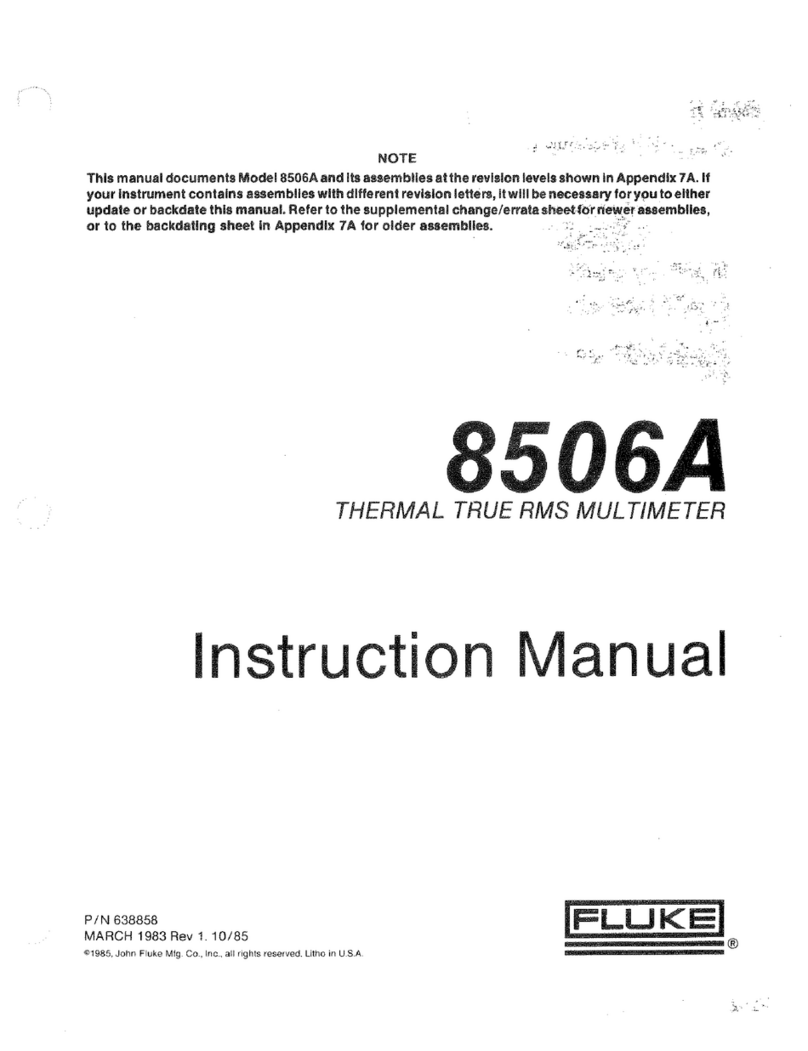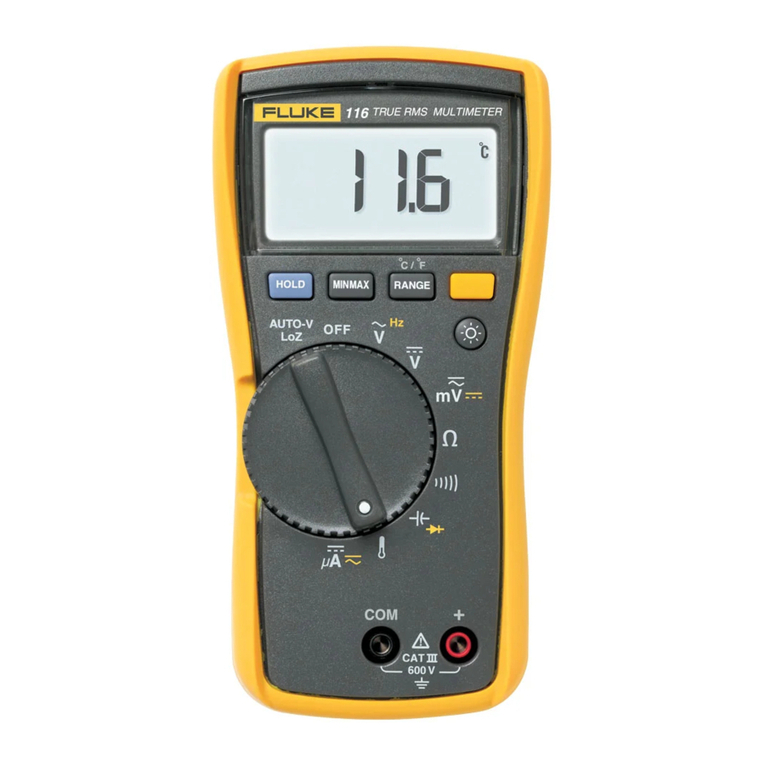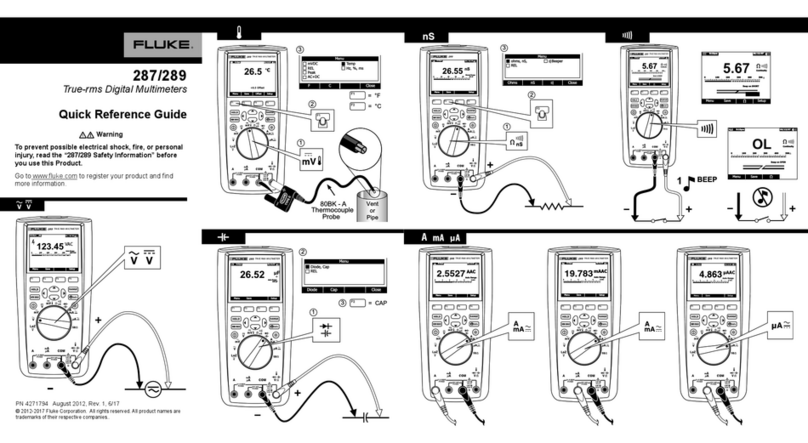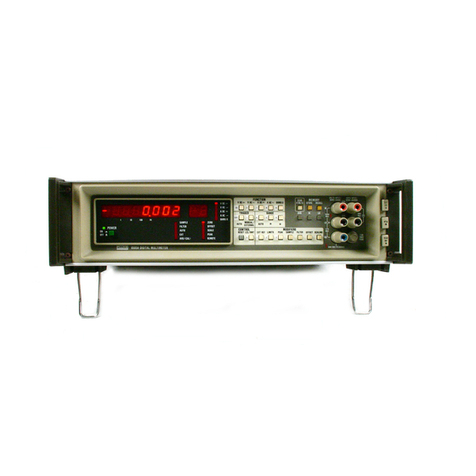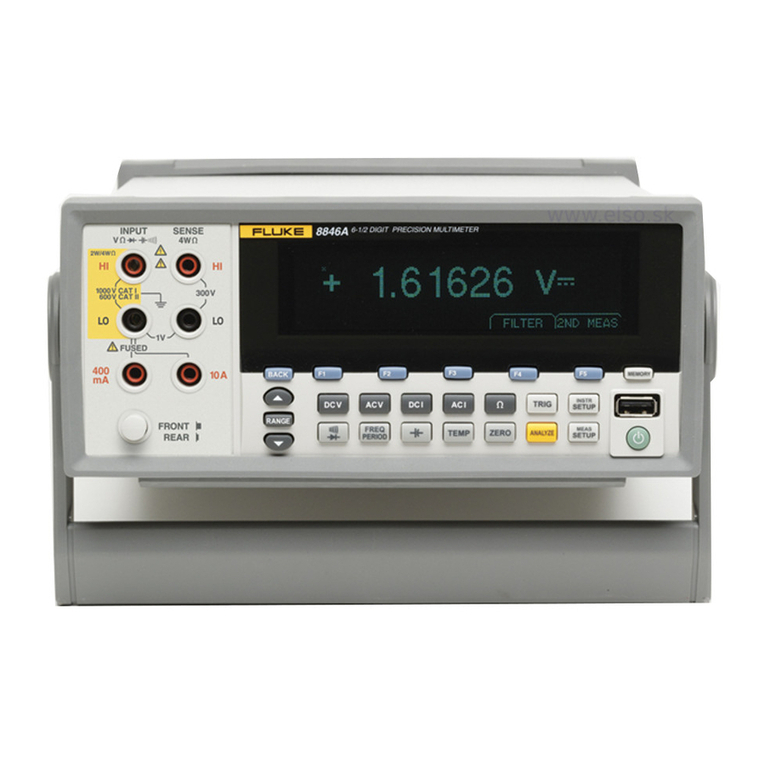
87V MAX
Calibration Information
2
General Specifications
Maximum voltage between any
terminal and earth ground ........................................... 1000 V rms
Fuse Protection for mA or μA inputs .......................... 0.44 A, 1000V, IR 10kA
Fuse Protection for A inputs........................................ 11 A, 1000 V, IR 17 kA
Display
Digital.......................................................................... 6000 counts, updates 4/sec / 19,999 counts in high-resolution
mode
Bargraph ..................................................................... 33 segments; updates 40/sec
Altitude
Operating .................................................................... 2000 meters
Storage ....................................................................... 10 000 meters
Temperature
Operating .................................................................... -15 °C to 55 °C, to -40 °C for 20 minutes when taken from 20 °C
Storage ....................................................................... -55 °C to 85 °C (without battery)
-55 °C to 60 °C (with battery)
Temperature coefficient ............................................... 0.05 X (specified accuracy) / °C (<18 °C or >28 °C)
Safety ............................................................................. IEC 61010-1: Pollution Degree 2
IEC 61010-2-033: CAT III 1000 V, CAT IV 600 V
Electromagnetic Compatibility (EMC)......................... In an RF field of 3 V/m, accuracy = specified accuracy +20
counts, except 600 μA dc range total accuracy = specified
accuracy +60 counts. Temperature not specified.
International ................................................................ IEC 61326-1: Portable Electromagnetic Environment
CISPR 11: Group 1, Class A
Group 1: Equipment has intentionally generated and/or uses conductively coupled radio frequency energy
that is necessary for the internal function of the equipment itself.
Class A: Equipment is suitable for use in all establishments other than domestic and those directly connected
to a low-voltage power supply network that supplies buildings used for domestic purposes. There may be
potential difficulties in ensuring electromagnetic compatibility in other environments due to conducted and
radiated disturbances.
Caution: This equipment is not intended for use in residential environments and may not provide adequate
protection to radio reception in such environments.
Emissions that exceed the levels required by CISPR 11 can occur when the equipment is connected to a test
object.
Korea (KCC) ............................................................... Class A Equipment (Industrial Broadcasting & Communication
Equipment)
Class A: Equipment meets requirements for industrial electromagnetic wave equipment and the seller or user
should take notice of it. This equipment is intended for use in business environments and not to be used in
homes.
USA (FCC).................................................................. 47 CFR 15 subpart B. This product is considered an exempt
device per clause 15.103. In an RF field of 3 V/M, accuracy =
specified accuracy +20 counts, except 600 μA dc range total
accuracy = specified accuracy +60 counts. Temperature not
specified
Relative Humidity.......................................................... 0 % to 95 % (0 °C to 35 °C)
0 % to 70 % (35 °C to 55 °C)
